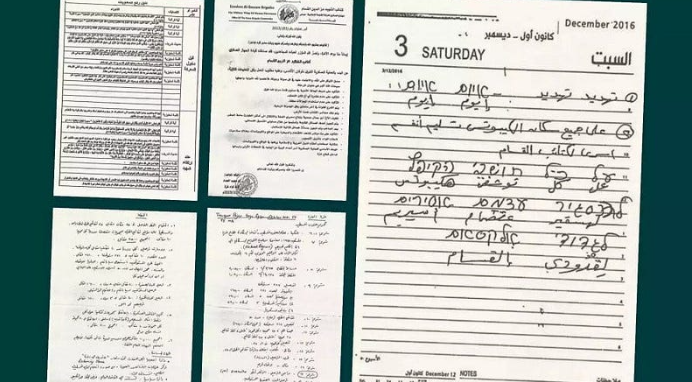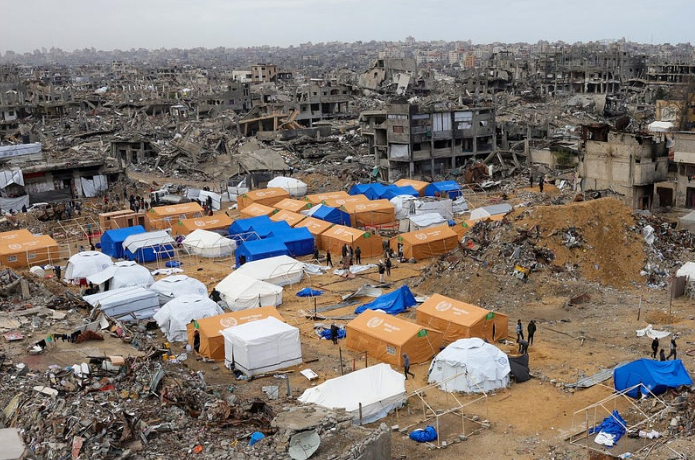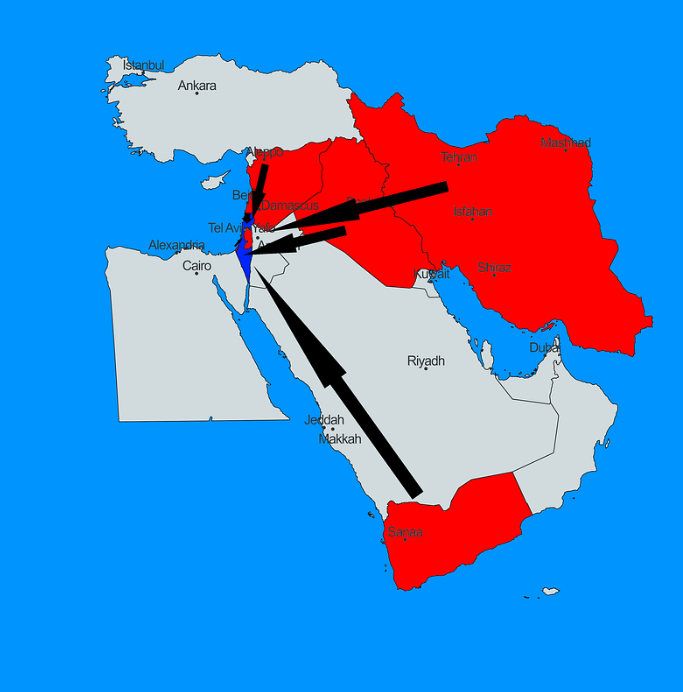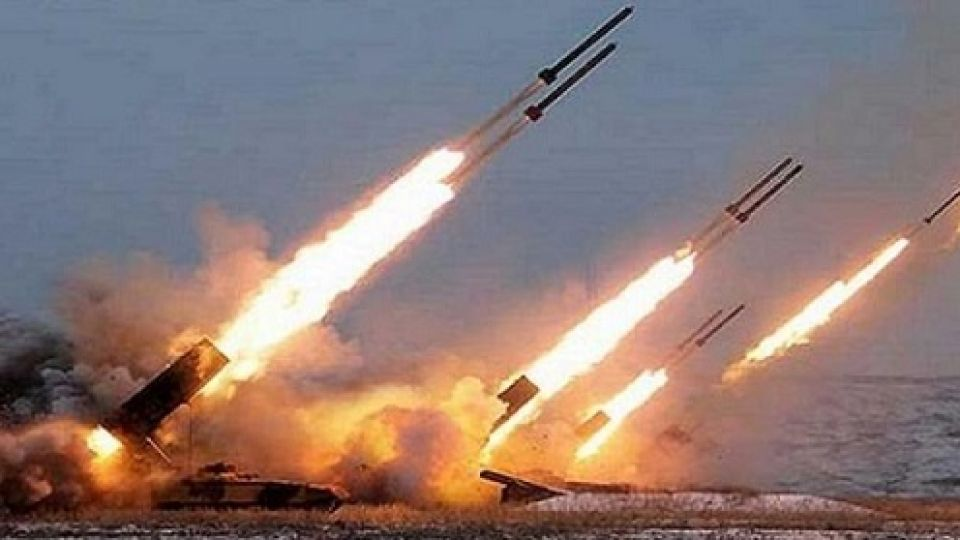This Is How October 7th Doomed Iran
- Inuka Tatton
- Jun 29
- 12 min read
October 7th Marked the Beginning of Tehran’s Irreversible Collapse — and the Fracturing of Its Axis of Resistance

Introduction
Nearly two years ago, the skies above Israel lit up as between 2,500 and 5,000 rockets were launched, briefly overwhelming the country’s air defence systems. Since then, the region has endured a prolonged and devastating conflict that has resulted in the deaths of tens of thousands. In retrospect, the events of October 7 appear to have marked a critical turning point in the regional balance of power, particularly concerning Iran’s influence across the Middle East.
The absence of an immediate, coordinated regional response following Hamas’s offensive revealed structural weaknesses within the so-called Axis of Resistance — a network of Iranian-aligned non-state and state actors. What followed was a chain of escalations that transformed the Middle East: Hamas was isolated early on; Hezbollah and Syrian state forces were significantly weakened; and, eventually, Israel launched direct strikes on Iranian territory.
Background: Before October 7th
The attacks of October 7 cast a long shadow over the Middle East, yet before that day, the region was poised for a markedly different trajectory.

A working meeting between U.S. President Joe Biden’s delegation and Saudi Crown Prince Mohammed bin Salman had produced several memoranda of understanding, with diplomatic sources suggesting that a formal normalisation agreement between Saudi Arabia and Israel was within reach. As two of the region’s most influential powers, such a deal was widely seen as a landmark moment with significant strategic implications.
Israel Hayom, in its coverage of the talks, highlighted the potential consequences of this diplomatic shift:
“A deal with Saudi Arabia has long been considered the ‘true prize’ for Israel and a strategic goal for Washington in building a regional coalition against Iran.”
As normalisation progressed, analysts and officials speculated that this alignment of Israeli and Saudi interests could be perceived in Tehran as a direct threat to Iran’s long-term regional strategy. In a CBS 60 Minutes interview aired on September 20, 2023 — just two weeks before the October 7 attacks — the Crown Prince remarked:
“Every day we get closer. It seems it’s for the first time real, serious. We get to see how it goes.”
Evidence revealed by seized IDF documents and independently verified communications by the New York Times indicate that at the very least, senior Iranian officials in Tehran were aware of the attacks.

“We are confident that we and you, by the end of these two years … will uproot this monstrous entity,” meaning Israel, wrote Yahya Sinwar and other Hamas leaders in a 2021 plea to Tehran. “We will not waste a minute or a penny unless it takes us toward achieving this sacred goal.”
The August minutes — the final documents reviewed by The Times — indicate that Mr. al-Hayya informed senior Iranian, Mr. Izadi, that Hamas would require assistance in striking critical sites during “the first hour” of the assault.
According to the document, Mr. Izadi expressed that Hezbollah and Iran were, in principle, supportive of the plan but needed time “to prepare the environment.”
The deepening Israeli occupation of the West Bank, along with the increasing Israeli presence at the Aqsa mosque compound, “cannot compel us to remain patient,” the August document stated.
Hamas’s leaders appeared optimistic that their allies would not leave them “vulnerable,” though they acknowledged the possibility of needing to carry out the attack independently.
Taken together, these documents suggest that the October 7 attacks were not an isolated event, but rather part of a broader geopolitical effort — whether centrally directed or opportunistically aligned — to disrupt a strategic convergence between two of Tehran’s principal rivals.
Had Israeli-Saudi normalisation been finalised, it could have reshaped the regional balance of power, potentially encircling Iran with a bloc of aligned pro-Western states stretching from Oman in the south to Azerbaijan in the north. For Iran, such an outcome may have represented an intolerable strategic encroachment.
A Day that Lives in Infamy
In the early hours of October 7, 2023, a sense of calm was shattered across Israel as air raid sirens blared through the darkness. At daybreak, the armed wing of Hamas launched a coordinated, multi-front assault on Israeli territory. Thousands of rockets were fired from the Gaza Strip, while dozens of fighters breached the border through simultaneous incursions by air, land, and sea. The attack coincided with a major Israeli holiday and caught security forces off guard.

Hamas Was the First to Fall
The stated objective of the October 7 assault, as articulated by Hamas political leader Ismail Haniyeh, was to ignite a broader resistance movement across the Palestinian territories and among Arab and Muslim communities globally. Speaking later that day, Haniyeh declared:
“Operation Al-Aqsa Flood was launched from Gaza, but it will extend to the West Bank, to Al-Quds and to our people within the territories occupied in 1948, as well as to the Resistance and the Palestinian people abroad.”

Despite the scale and coordination of the operation, analysts widely agree that Hamas did not aim to defeat the Israeli Defence Forces (IDF) through direct military means. Rather, the group appeared to seek a broader regional reaction — one that could unify Iranian-aligned actors and challenge Israel through a collective show of force.
However, no such coordinated escalation materialised in the immediate aftermath. While some supportive rhetoric was issued by actors within the Axis of Resistance, the absence of a synchronised military response — particularly from Iran or Hezbollah — left Hamas isolated. Intelligence assessments and media reports suggest that elements of the Iranian Revolutionary Guard Corps (IRGC) were aware of the attack beforehand but chose not to initiate a parallel escalation. This decision would have long-term consequences for the cohesion and credibility of Iran’s regional network.
Israel’s response was swift and expansive. Within days, the IDF mobilised 300,000 reservists — the largest call-up in the country’s history — and began sustained operations inside Gaza. With its unmatched air power, advanced surveillance capabilities, and highly structured reserve system, the IDF retained a decisive advantage.

Analysts argue that had Iran or its affiliated groups mounted a simultaneous or near-simultaneous offensive, the regional strategic picture may have looked very different. Instead, Hamas’s attack unfolded in relative isolation, allowing Israel to pursue a sequential military campaign targeting individual threats one by one — a classic divide-and-contain strategy.
At the same time, the humanitarian cost of the ongoing conflict has been staggering. As of this writing, the Palestinian Ministry of Health in Gaza reports more than 55,000 deaths resulting from Israeli military operations. Access to food, water, electricity, and medical supplies has been severely restricted, with UN agencies warning of widespread starvation. Humanitarian aid has faced delays and obstructions from multiple actors, including both the IDF and Hamas, albeit for distinct and often opposing strategic reasons.
The Syrian Capitulation
In early December 2024, Syria experienced an unexpected and rapid shift in power as the Assad regime — long a fixture of Middle Eastern politics — collapsed over just eleven days.
For over a decade following the outbreak of the Arab Spring, President Bashar al-Assad had clung to power, supported by loyalist forces and international backers.
![A portrait of Syrian President Bashar al-Assad is pictured with its frame broken, in a Syrian regime’s Political Security Branch facility on the outskirts of the central city of Hama, following the capture of the area by anti-government forces, on December 7, 2024 [OMAR HAJ KADOUR/AFP via Getty Images]](https://static.wixstatic.com/media/abb7e2_4a1c09c6401b4f6caf46d96ae0dd4021~mv2.png/v1/fill/w_682,h_460,al_c,q_85,enc_avif,quality_auto/abb7e2_4a1c09c6401b4f6caf46d96ae0dd4021~mv2.png)
The country had remained fragmented throughout the civil war, with Assad’s government holding key central and coastal regions; Kurdish-majority forces, notably the Syrian Democratic Forces (SDF), operating in the northeast; and opposition groups, including the Turkish-backed Syrian National Army (SNA) and Hay’at Tahrir al-Sham (HTS), controlling parts of the north and northwest.
The sudden turning point came when HTS, a group often regarded as a secondary actor in the conflict, launched an offensive against Aleppo, Syria’s most populous city. The operation — initially perceived as symbolic — triggered a rapid chain reaction. Rebel momentum spread quickly across major urban centres, and following Assad’s final stand in Damascus, he was evacuated with his family to a Russian-controlled military base on the Mediterranean coast. They were later transferred to Moscow under the protection of the Russian authorities.
The collapse of the Assad government had far-reaching strategic implications. From the perspective of regional balance, it removed Iran’s most prominent state-based ally. Beyond the loss of a government partner, it also disrupted what has often been termed the Iranian “land bridge” — a critical logistical route spanning from Tehran through Iraq and Syria to Lebanon. This corridor had been used extensively by the Islamic Revolutionary Guard Corps (IRGC) to move weapons, personnel, and support to allied groups across the Levant.
With this route no longer viable, Iran’s capacity to maintain steady support for its regional proxies was significantly diminished. In particular, the weakening of logistical lines would soon impact the capabilities of Hezbollah in Lebanon, whose operations had long depended on sustained Iranian backing.
The Fall of Hezbollah
Among Iran’s non-state partners, Hezbollah has historically held the most military significance. Based in Lebanon, the group has long been regarded as the most heavily armed and disciplined non-state actor in the region, with some estimates suggesting it possessed upwards of 120,000 rockets and missiles before the 2023–2025 conflict.

Formed in the aftermath of Israel’s 1982 invasion of Lebanon, Hezbollah positioned itself as a resistance force against foreign occupation and Israeli influence. Over the following decades, it expanded its political and military power, entrenching itself as both a domestic player in Lebanon and a central component of Iran’s regional strategy.
Following the October 7 attacks, Hezbollah joined the broader conflict on October 8, launching operations against northern Israel. However, the group did not initiate the kind of large-scale, sustained assault that some analysts had anticipated. Israel responded swiftly. According to military sources, the Israeli Air Force (IAF) began its campaign with an opening salvo that targeted Hezbollah’s communications systems — reportedly destroying a significant number of encrypted devices, radios, and pagers in a matter of hours.
The aerial campaign expanded rapidly, with heavy bombardment of Hezbollah positions in southern and central Lebanon. Throughout a three-month ground operation, Israeli forces engaged in intense combat with entrenched Hezbollah fighters, pushing them back beyond the Litani River. The fighting resulted in substantial casualties on both sides, along with significant civilian displacement and infrastructure damage.
By the conclusion of the operation, Israeli leadership declared its primary objective — to severely degrade Hezbollah’s military capabilities — had been achieved. While Hezbollah remains an active force in the region, its operational effectiveness and logistical resilience were both significantly impacted. In the broader context, the weakening of Hezbollah marked the collapse of what was widely considered Iran’s most capable proxy force in the region.
The Fall of Iran and the Axis of Resistance
By March 2025, the dynamics of the conflict had shifted significantly. Hamas and Hezbollah had been severely weakened, the Assad regime in Syria had collapsed, and other Iranian-aligned groups across the region faced increasing isolation or operational constraints. Collectively, these developments disrupted the structure of Iran’s regional network, commonly referred to as the Axis of Resistance.

With its principal allies degraded or removed from the battlefield, Iran became increasingly vulnerable to direct confrontation. While the extent of Tehran’s involvement in the October 7 attacks remains debated, intelligence assessments and financial records indicate longstanding strategic, military, and logistical support to Hamas and other groups. This longstanding investment, combined with the decision not to escalate immediately after October 7, placed Iran in a precarious position. It had committed to a regional posture but avoided full-scale engagement, leaving its proxies exposed while maintaining ambiguity in its role.
Once Hezbollah’s operational capacity was diminished and Syria’s airspace became less contested, Israel’s air force (IAF) gained relatively unobstructed aerial routes through Lebanon, Syria, and Iraq. These conditions, coupled with rising concerns over Iran’s nuclear program, led to a strategic shift in Israeli policy.
On June 13, 2025, nearly 20 months after the initial Hamas assault, the conflict reached a new threshold as Israel launched direct strikes against Iranian territory, citing an urgent threat posed by Iran’s nuclear activities.
Israel’s Strikes
In the early hours of June 13, 2025 — between 2:00 and 3:00 AM local time — explosions were reported across Tehran and several other Iranian cities. Israeli F-35 fighter jets, widely regarded as among the most advanced stealth aircraft in the world, crossed Syrian and Iraqi airspace undetected and conducted a large-scale aerial operation targeting Iranian infrastructure.
In the early hours of June 13, 2025 — between 2:00 and 3:00 AM local time — explosions were reported across Tehran and several other Iranian cities. Israeli F-35 fighter jets, widely regarded as among the most advanced stealth aircraft in the world, crossed Syrian and Iraqi airspace undetected and conducted a large-scale aerial operation targeting Iranian infrastructure.
According to Israeli and independent sources, approximately 200 aircraft participated in the operation. The strikes focused on nuclear facilities in Natanz and Isfahan, military command centres, and strategic infrastructure linked to the Islamic Revolutionary Guard Corps (IRGC). Reports also indicate that residential complexes in western Tehran housing senior IRGC officials were struck, resulting in the deaths of multiple high-ranking commanders, including General Hossein Salami and General Gholamali Rashid, though some reports remain unverified.
At Natanz, initial assessments suggested that surface-level centrifuge systems were heavily damaged, reducing operational capacity by an estimated 60%. In addition to nuclear sites, other military facilities — including the Kermanshah Missile Base and Tabriz Airbase — were also targeted, causing significant damage to Iran’s air defence and retaliatory systems.
Iranian authorities reported at least 78 fatalities and more than 320 injuries in the first 24 hours, including both military personnel and civilians. The Israeli government framed the operation as a preemptive measure, arguing that Iran was on the verge of obtaining sufficient fissile material for multiple nuclear warheads. International reaction was mixed, with some allies expressing support for Israel’s security concerns and others calling for restraint and an immediate ceasefire.
The initial wave of strikes was followed by nearly two weeks of reciprocal attacks. Iranian forces launched missile volleys toward Israeli and U.S. targets in the region, including bases in Iraq and Qatar. Casualty estimates from this 12-day escalation exceeded 700, with thousands more wounded on both sides. However, military analysts noted that Israel retained consistent aerial dominance, particularly in long-range operations.
One contributing factor to Iran’s vulnerability, according to some observers, was the institutional divide between the Iranian Armed Forces and the IRGC. This dual-structure approach limited unified military coordination, making it more difficult to respond effectively to high-precision, fast-moving threats.
The eventual ceasefire, brokered under mounting international pressure, marked the conclusion of this phase of hostilities. For now, it has significantly weakened the operational integrity of the Axis of Resistance, at least in its current form.
A Glimpse into the Future
The trajectory of the Middle East remains difficult to predict. The region continues to be shaped by internal divisions, historical grievances, and geopolitical rivalries. Nonetheless, it is possible to outline several plausible directions based on current developments.
The ceasefire between Iran and Israel does not signal the arrival of peace, but rather a temporary pause — a moment for all actors to regroup and reassess. Iran has experienced significant strategic setbacks, including the weakening of its regional network and the loss of critical infrastructure. Faced with sustained aerial bombardment from the Israeli Air Force (IAF) and the United States Air Force (USAF), Tehran ultimately opted to de-escalate rather than risk further devastation.
For Israel, the current moment represents a strategic inflection point. For the first time since its founding in 1948, it faces no major conventional adversaries in its immediate vicinity. Egypt and Jordan remain bound by peace treaties; Syria is politically fragmented; Hezbollah has been degraded; and Hamas, while still active, no longer possesses the operational capacity it once did. Iraq remains politically divided and strategically constrained.
While Israeli military leaders acknowledge that groups such as Hamas and Hezbollah may never be entirely dismantled, the recent campaigns appear to have significantly limited their ability to coordinate or launch large-scale operations akin to October 7.
The broader question now facing the region is whether these developments will lead to a sustained period of strategic dominance by Israel and its Western-aligned partners, or whether a new actor will emerge to fill the vacuum left by a weakened Iran — much as Iran itself expanded its influence following the fall of Iraq’s Ba’athist regime in 2003.
There is also the possibility that Iran, despite its losses, will eventually rebuild its network of alliances. A reconstituted Axis of Resistance could, in time, return to prominence — perhaps with greater cohesion, resources, or external support. Whether the region is entering a phase of relative calm or merely the intermission before a future escalation remains to be seen.
Conclusion
The events of October 7, 2023, marked the beginning of a complex and far-reaching regional transformation. What began as a surprise assault by Hamas soon escalated into a protracted and multifaceted conflict involving non-state actors, regional governments, and global powers.
In the months that followed, Israel systematically targeted components of what had long been referred to as the Axis of Resistance. Hamas was isolated and contained, the Assad regime collapsed, Hezbollah was militarily weakened, and Iran’s direct vulnerability increased. Once these barriers were removed, Israel launched direct strikes on Iranian territory, culminating in the intense 12-day confrontation that concluded on June 25, 2025.
October 7 may be remembered as a catalyst for this regional shift, but June 13 — the date of the Israeli strikes on Iran — may prove to be its definitive turning point. The long-term consequences of these developments are still unfolding. Whether the region moves toward increased stability, renewed confrontation, or the emergence of a new balance of power will depend on how the involved actors choose to respond to this new reality.
Support the Coalition for Peace and Coexistence
If you found this article insightful, please consider supporting our work at the Coalition for Peace and Coexistence (CPC). We are an independent, youth-led platform committed to truth-telling, peacebuilding, and bridging global divides through accessible, powerful journalism and international collaboration.
📚 Read more CPC articles: Visit our publication
🌐 Join our peacebuilding community: Visit our website
📨 Get updates: Subscribe to stay informed about events, new articles, and peace efforts
❤️ Support our mission: Make a small donation to keep our work going
Every article, every call, and every effort is powered by readers like you. Thank you for standing for justice and peace.


Comments